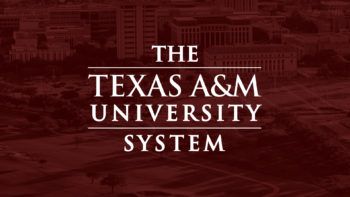Texas A&M Economic Impact Locally At Record Level – More Than $4.4 Billion For 2013

Texas A&M University and other members of The Texas A&M University System based locally continue to increase their economic impact on the local area, as underscored by a new study showing they had a positive effect of more than $4.4 billion during 2013.
The economic impact of the University, the Health Science Center, Agencies and the TAMUS offices and activities has almost doubled over the past decade, the study shows. For calendar year 2013, the estimated Texas A&M impact on Bryan, College Station and the surrounding area was $4.42 billion, an increase of almost $113 million from 2012 levels and about $2.2 billion more than in 2003—a 96.4 percent gain. Those figures are based on the use of a standard 2.5 multiplier effect representing the number of times such generated dollars are typically spent and re-spent in the local economy.
The Texas A&M-related funding subject to the multiplier effect was $1.77 billion, representing a gain of almost $50 million over the 2012 level.
Those findings highlight the annual in-house study conducted by Texas A&M’s Division of Finance and Administration in collaboration with various entities within the university and TAMUS.
“We have a real ‘win-win’ situation going here, in my opinion,” noted TAMUS Chancellor John Sharp. “The Bryan-College Station community is a great place to live and work, and we’ve partnered to mutual advantage with both cities and the county on some key projects, most recently with the City of College Station regarding the enhancement and expansion of Kyle Field. We are proud to contribute to the economic vitality of the area, and we think the institutions based here have highly positive impacts in a host of other manners, too. In short, it’s great to be able call this ‘home’ and we think—certainly hope—that feeling is mutual throughout the community.”
Texas A&M Interim President Mark A. Hussey agreed, saying: “We’re certainly fortunate to work and live in a community where there’s mutual respect and support. In short, we are delighted to be able to contribute, economically and otherwise, to the vitality of Bryan-College Station and the surrounding area and look forward to continuing to contribute and partner in the future.”
The annualized average payroll for the 21,073 Texas A&M and A&M System employees (including student employees) based locally was approximately $889 million for 2013, representing an increase of more than $16 million. Payrolls directly benefit the local economy through purchases made by employees and their families as well as through other factors, including the deposit base in local financial institutions, officials noted.
The direct local economic impact of the university’s record number of students on the College Station campus (50,000-plus as averaged on a semester basis for the calendar year) was estimated to be $494 million, for a gain of more than $25 million. Major categories for student expenditures include food, housing, clothing, school supplies and recreation.
Expenditures by visitors attending sporting events and other campus activities totaled an estimated $385 million, almost $8 million more than for the previous year. The estimated number of visitors totaled more than 1.3 million. Texas A&M athletic events accounted for about 960,000 of them, for an increase of more than 86,000, with most of the gains attributed to home football games. Visitors, particularly with Texas A&M’s move to the Southeastern Conference, remained in the Bryan-College Station area longer and spent more money in 2013 than in previous years, officials note. The estimated expenditures by visitors was determined by applying the per-diem leisure rate used by the Bryan-College Station Convention and Visitors Bureau, which estimates that the typical visitor stays in the community 2.5 days.
Texas A&M and its related state agencies continue to rank first in the state in research investment. Research totals for Fiscal Year 2013 are not yet available, but the FY 2012 total credited to entities headquartered in Bryan/College Station, including the Health Science Center, was a record $782 million. Officials point out that a large portion of the research funding is applied to salaries and wages and thus included in the payroll category.
Also, officials note, in some cases research results lead to patents and licenses that have significant economic benefits that are not included in the local economic impact study.
Construction costs attributed to calendar year 2013 total about $148 million, a decline of approximately $58 million, attributable primarily to the completion of some projects. However, work was started on others during the year, including the $450 million expansion and renovation of Kyle Field. Officials note campus construction projects provide numerous opportunities for regional employment and raw material sales that are not necessarily included in the university’s generalized study.
The study measures the economic impact of Texas A&M, as well as key aspects of A&M System members based in College Station, including the System Offices, the Texas A&M Health Science Center, and the System’s seven state agencies: Texas A&M AgriLife Research, Texas A&M AgriLife Extension Service, Texas A&M Engineering Experiment Station, Texas A&M Engineering Extension Service, Texas A&M Forest Service, Texas A&M Transportation Institute and Texas A&M Veterinary Medical Diagnostic Laboratory.
Division of Finance and Administration officials pointed out the study is designed to highlight some of the regional economic activity resulting from the presence of Texas A&M (including the Health Science Center), the A&M System headquarters and A&M System agency activities conducted locally. It does not purport to represent the sum total of their full impact on the region, and the study’s parameters and methodologies continue to be fine-tuned, they added.
Media contact: tamunews@tamu.edu.





